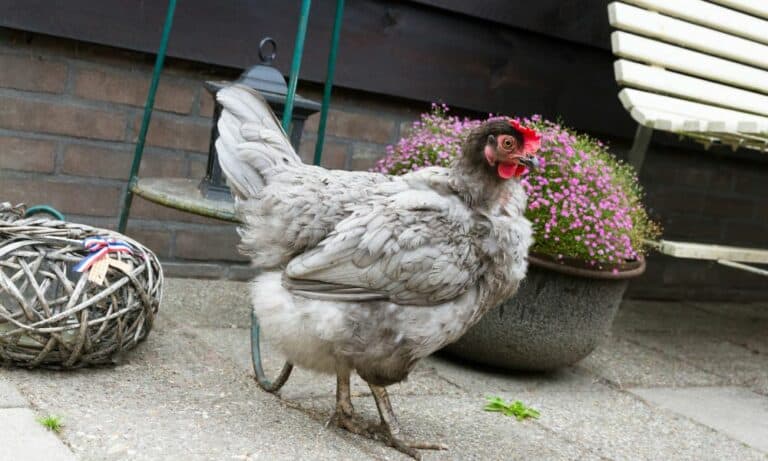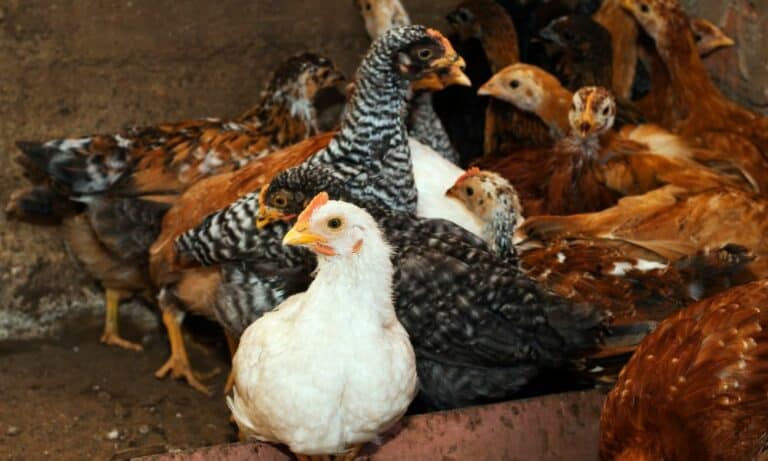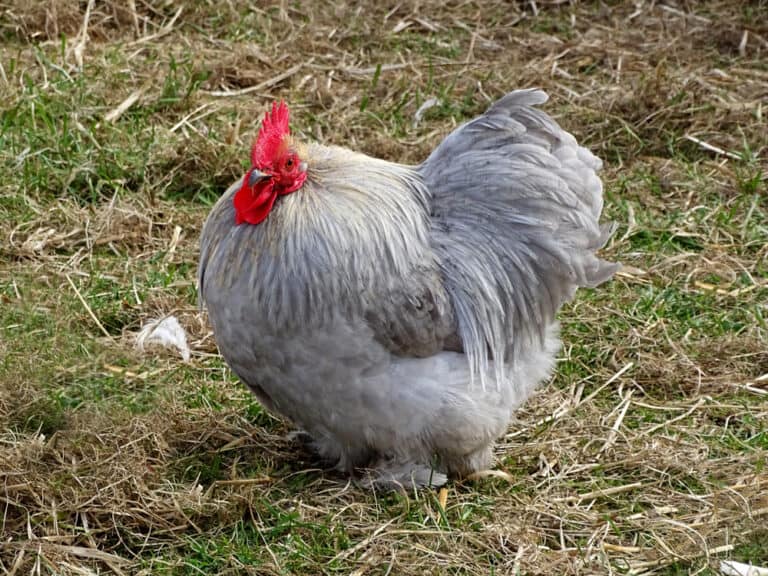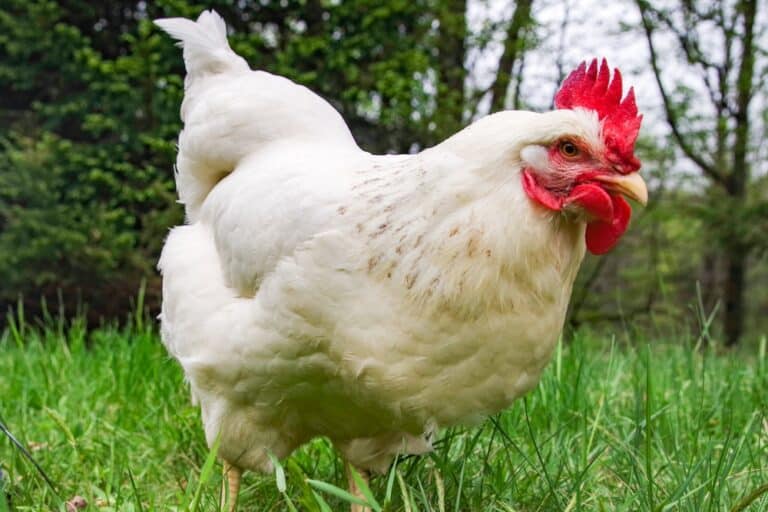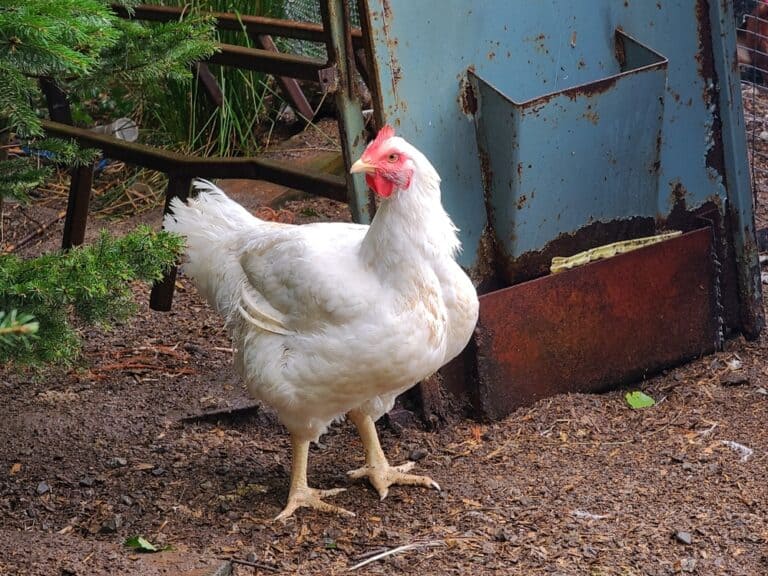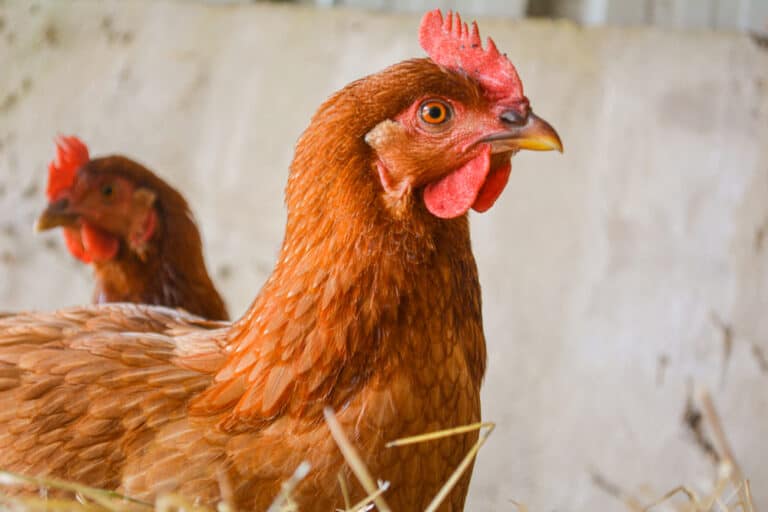If you’re looking for a chicken breed that excels in nearly every category, the Bielefelder Chicken may be perfect. While this is a fairly new breed, especially in areas outside of Germany, it has nearly every characteristic a poulterer desires.
Bielefelder Chickens are a larger breed known for their high egg production, gentle disposition, and hardiness. They thrive in nearly every application, and they socialize well with humans (of any age or size).
The Bielefelder Chicken has a lot to offer, most of which we cover in the following sections. Keep reading to learn more about where they come from, how they behave, and what they bring to the table for any chicken farmer.
Bielefelder Chicken Origin
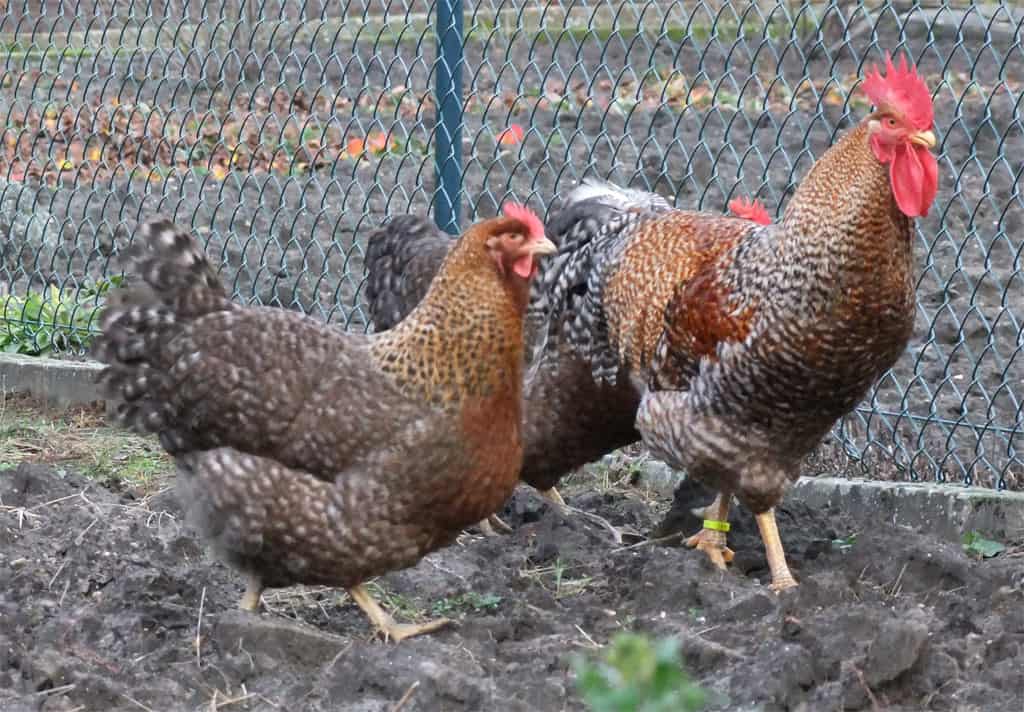
The Bielefelder (pronounced bee-lay-felder) breed started in Bielefeld, Germany in the 1970s. German breeder Gerd Roth used the work of Reginald Punnett to develop an autosexing chicken using existing breeds such as:
- New Hampshire
- Wyandotte
- Amrock (the production version of Plymouth Barred Rocks)
It’s assumed that Roth also used Cuckoo Malines, Welsummers, and possibly Malines, but the exact details regarding these breeds are fuzzy.
Eventually, Roth reached a point where he could consistently produce offspring with predictable characteristics. The resulting breed, then called the Deutsche Kennhuhn, was first exhibited in 1976.
In 1980, the breed was recognized by the Bund Deutscher Rassegeflügelzüchter, and the name was changed to Bielefelder Kennhuhn. They were not brought to the United States until 2011.
Because of the popularity of the breed in the U.S., unrelated bloodlines were imported again in 2013 and 2017, and they’ve quickly grown into a favorite for many. While they’re not one of the 53 large breeds recognized by the American Poultry Association, Bielefelder Chickens are desirable for nearly every application outside of showing.
Bielefelder Chicken Appearance
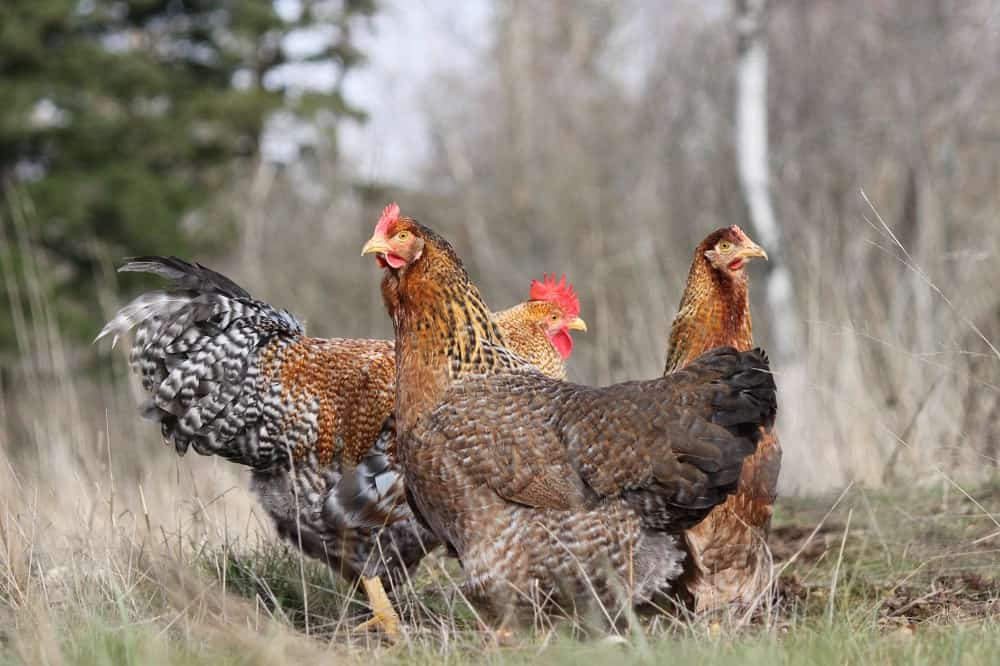
Regardless of sex, Bielefelder Chickens follow a similar appearance. While there is no specific breed standard for these chickens to adhere to in the United States, purebred Bielefelders have yellow, featureless less and red combs, earlobes, and wattles.
Coloring may vary from chicken to chicken, but most have a brown base color on their body. Accenting feathers develop in orange, gray, black, and white (all with a pink tone), providing the Bielefelder Chicken with greater camouflage when foraging or roaming free.
This is an auto-sexing breed, meaning that chicks appear differently depending on their sex. As they mature into pullets and cockerels, you notice defining features and color patterns that solidify their sex.
Auto-Sexing Chicks
The Bielefelder Chicken breed was designed to produce auto-sexing chicks. This allows breeders and chicken keepers to understand the sex of a chick as soon as it hatches, taking a lot of the guesswork out of chicken tending.
Females are born with a dark stripe down their back, similar to what you would see on a chipmunk. Males are lighter in color and have a white or light yellow spot on the top of their heads.
Because of this, you can more easily sell chicks at a young age or determine what you will do with them. Pullets can easily go on to other farms or remain at home, and you have more time to plan for the fate of your cockerel.
Bielefelder Hens
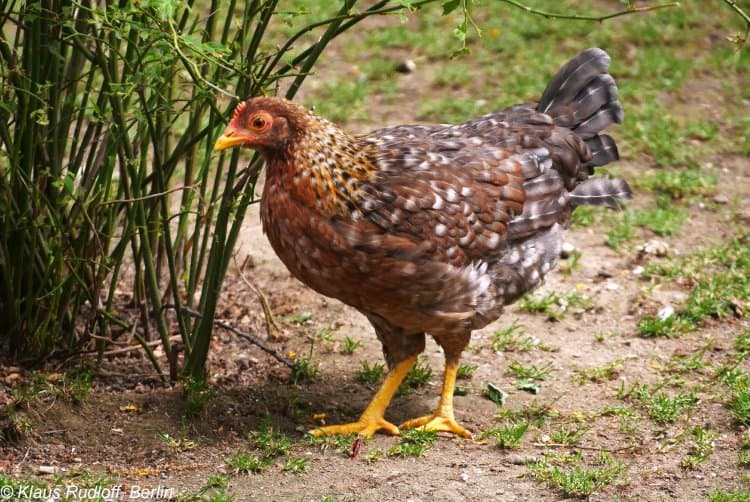
As they get older, female Bielefelder Chickens dig deeper into their brown coloring, but they develop a white and gray barred overlay. Hens may get a bit of an orange color around their necks, but they retain the brown appearance overall.
Bielefelder hens can weigh as much as the roosters, but most top out around 9.5 pounds. The larger hens may reach 10 to 12 pounds.
Bielefelder Roosters
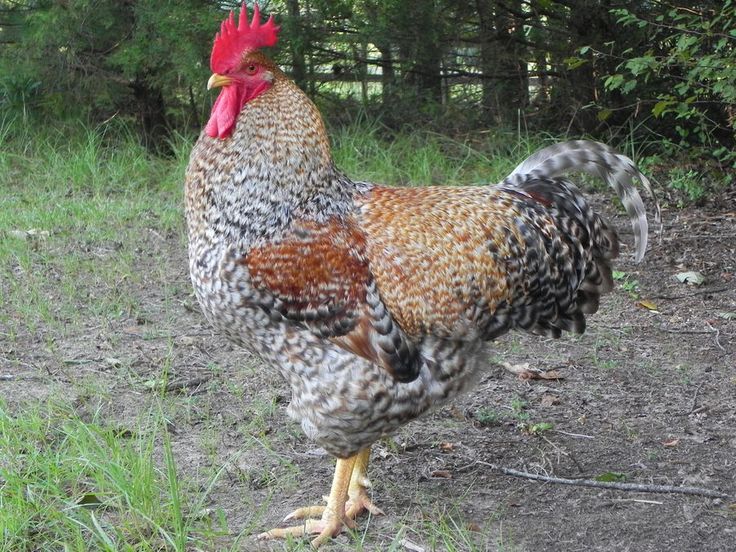
Like many other birds, Bielefelder roosters have more dramatic coloring than the hens of the breed. Overall, the roosters have more orange in their feathers. They’re also likely to develop a more complex, spotted pattern.
Bielefelder roosters have barred black tails and breasts. They’re also more likely to take on the cuckoo pattern similar to the Malines many assume contributed to the breed’s start.
Bielefelder Chicken Temperament
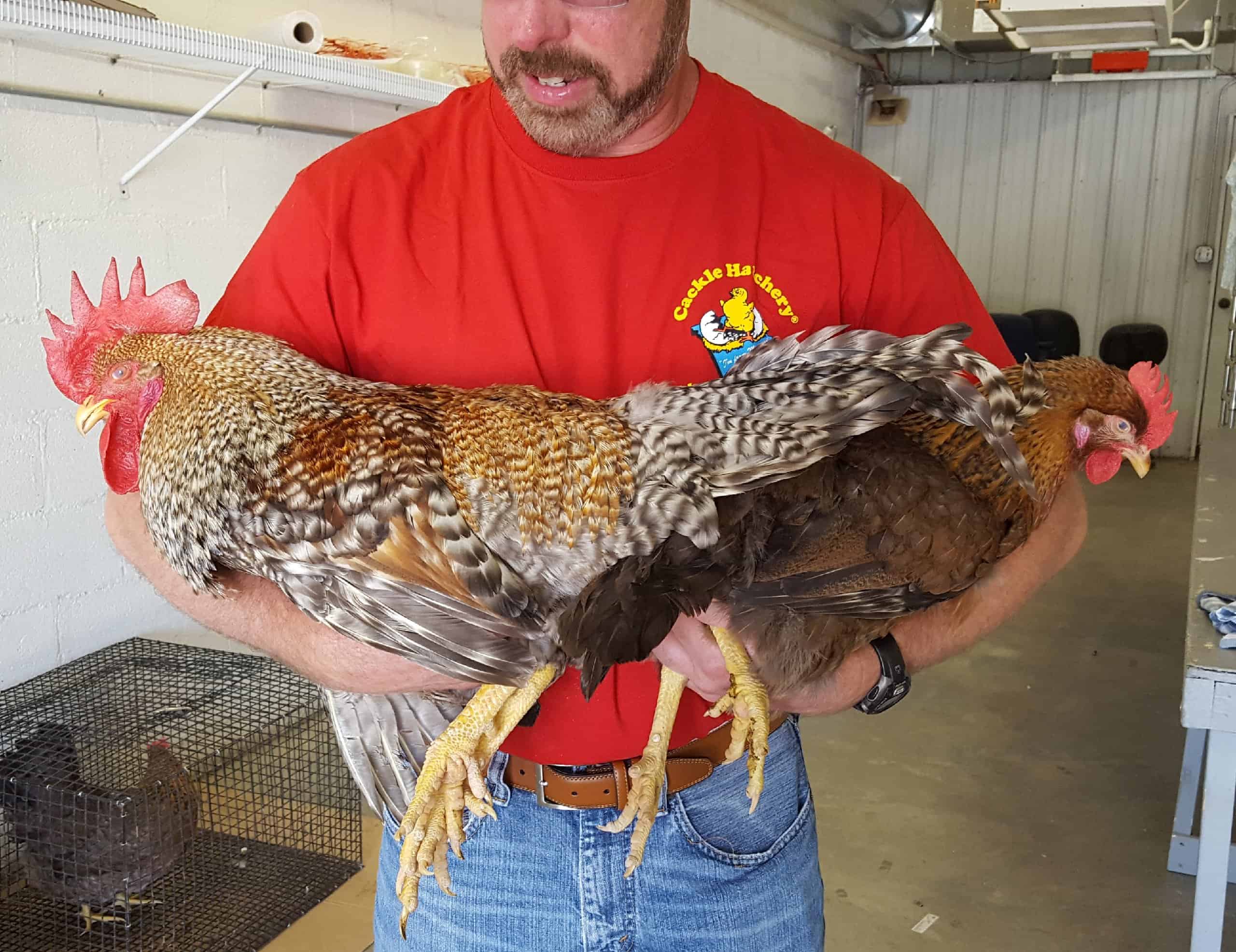
The Bielefelder Chicken is a favorite breed of many based on their temperament alone. Some breeders compare their behavior to that of a dog rather than a chicken, and they claim you’re likely to find them underfoot.
These gorgeous birds come up running to greet you (even if you’re not carrying food), and they seek human companionship more than other chicken breeds. This makes them a great choice for backyard coops as well as anyone with small children.
Despite all of this, the Bielefelder Chicken is not a pushover. They seem to have a good understanding of when they can relax and when they need to turn on the aggression. The gentle temperament switches off as soon as predators are detected, and the rooster knows exactly how to deal with any threats that show up.
Rooster Aggression
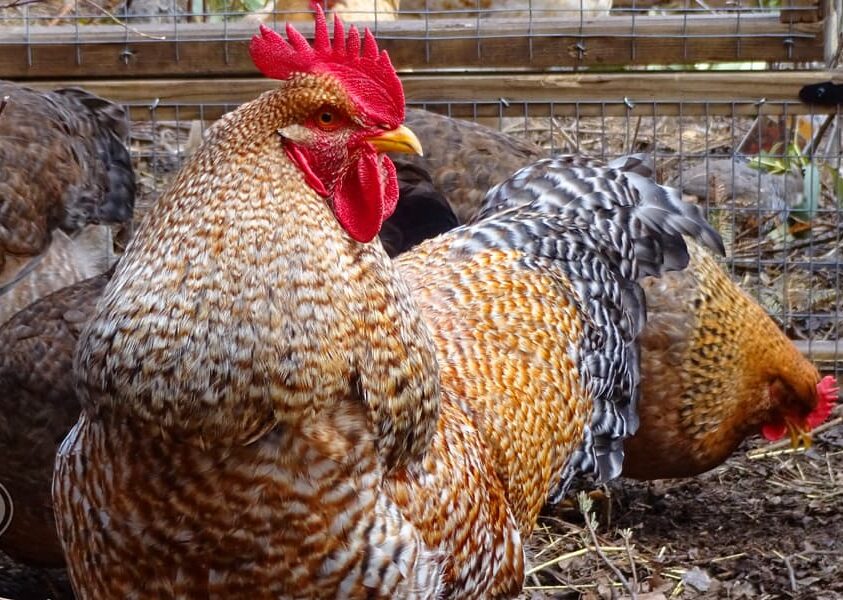
Unlike other chicken breeds, Bielefelder roosters are willing to fraternize with humans and unlikely to chase your small children right into their nightmares. Poultry breeders find that though the Bielefelder is a beautiful bird, he understands the nuance of his assignment well.
A well-socialized and well-bred rooster seems to check all the boxes. He will call out to hens when he finds food, and he’s more gentle than other breeds when mating.
The Bielefelder rooster knows when it’s time to fight too. Predators like hawks or coyotes will trigger his protective side, and he understands that the survival of his flock is a priority.
Broodiness
While female chickens can go broody and become a nightmare for harvesting eggs, it’s not likely to happen with a Bielefelder hen. Very few of the females go broody, even when dealing with a whole clutch of eggs, and you can remove them without donning protective gear.
This doesn’t mean that the hens are poor mothers. Once the chicks hatch, the warm and nurturing nature of the Bielefelder hen really shows up.
Bielefelder Chicken Egg and Meat Production
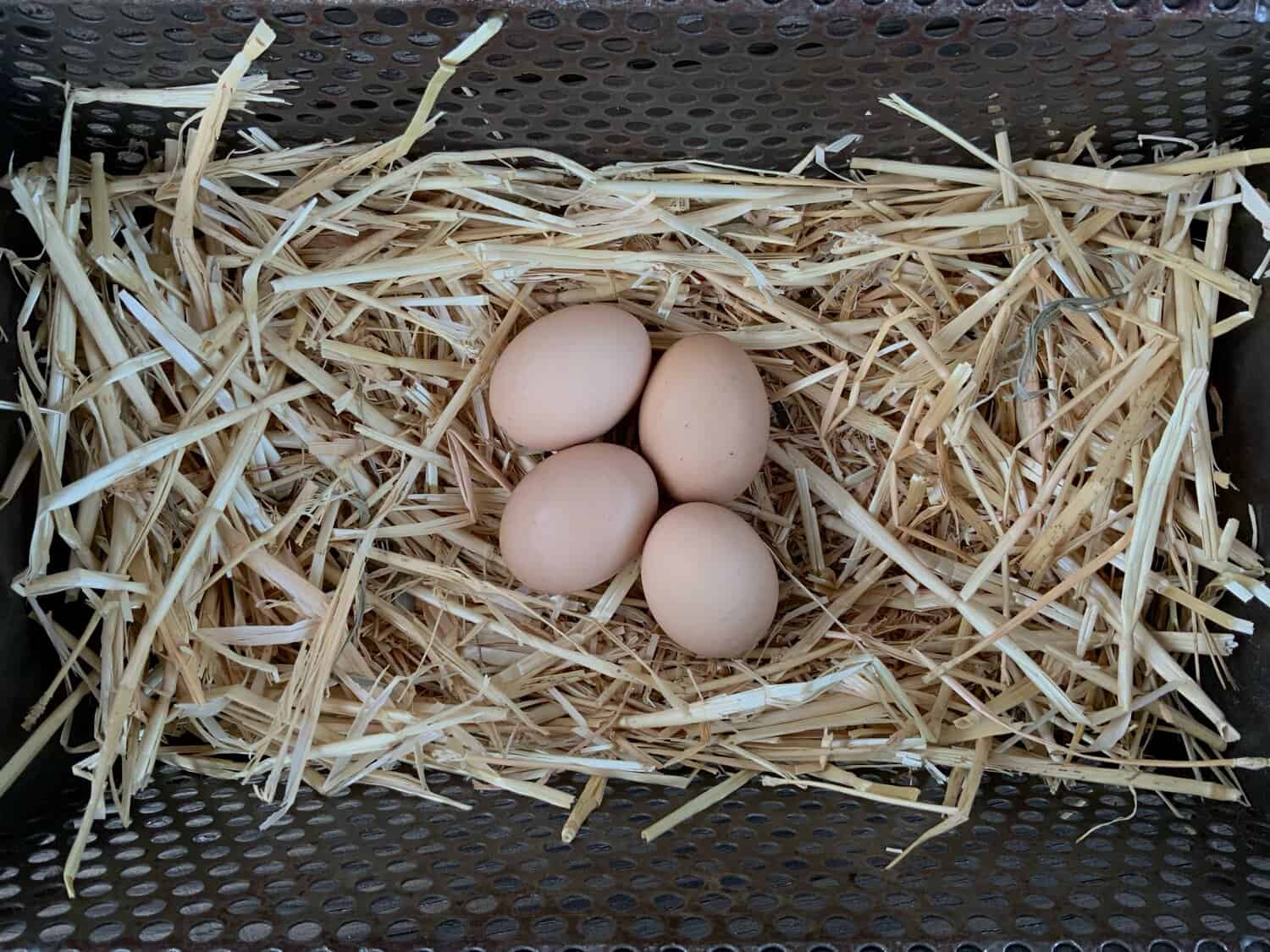
Bielefelder Chickens are a dual-purpose breed, meaning they’re both good egg layers and large birds suitable for meat production. Whether you need companionship, eggs, or meat, the Bielefelder can provide.
Hens lay an average of 230 extra-large eggs per year, although some superstars can put out more than 280 in a year. Because of the size of the breed, you won’t get your first egg until they’re 6 to 10 months old, but they lay consistently after that.
Bielefelder hens maintain productivity until they’re about 2 or 3 years old. After this point, production slows until they reach “retirement age” at 5. It’s unlikely to get more eggs after this.
Because they’re a cold-hardy breed, Bielefelders will lay year-round as long as you meet their housing and feed needs.
Bielefelder roosters are commonly set aside for meat production. The meat is known for its juiciness and flavor, and its large size provides more than other breeds. If you plan on raising them for meat, you should harvest them between 12 and 16 weeks for the optimal texture and flavor.
Bielefelder Chickens and Olive Eggers
Colored chicken eggs have become much more desirable in recent years, and breeds that lay anything other than the standard colors seem to have a bit of a following.
Bielefelder Chickens lay brown eggs, but they’re not your normal brown. These have a unique dark brown coloring with a slight pink hue, but they’re also essential for anyone wanting an “olive egger” in their flock.
There is no chicken breed that lays green eggs. Instead, you must breed a brown egg layer and a blue egg layer. When you breed the Bielefelder with a blue egg layer, like the Ameraucana, the resulting hens lay a unique, olive color.
Bielefelder Chicken Care Requirements
Bielefelder chickens have no special care requirements, but they tend to prefer certain foods and habitats. Accommodating these preferences will improve the mood of your flock, improving their temperament, health, and egg production.
Like most chickens, Bielefelder Chickens do best if they’re provided a baseline complete nutrition feed with plenty of fresh food options on the side. Bielefelders will eat more than other breeds due to their size, so make sure you’re ready for this when you take them into your flock.
You can offset the high nutrition requirement by adding fruit, vegetable, and grain scraps from the foods that you eat. Make sure that 20 percent of their daily intake involves quality protein, but feel free to feed favorites such as:
While you can introduce live mealworms to a coop to enrich their diet and minds, Bielefelder Chickens would prefer to forage for their own insects outside of the coop (and they’re not bad at it).
The breed has quick reflexes that allow them to snatch up any insects they come across, but they’re also well-suited for free roaming. These quick reflexes are great survival tools, and the camouflage coloring means your chickens can hide easily if a predator does show up.
Make sure you provide them with plenty of room to explore as well as a solid structure, complete with nest boxes, for safety and peace of mind.
Conclusion
Because the Bielefelder Chicken is a relatively new breed, you may need to find an online hatchery to ship eggs or travel to if you want to add some to your flock. Many find this a small hurdle to overcome to have such a superb breed.
The Bielefelder Chicken has its place in nearly every chicken farm. They’re not difficult to keep alive, and they’re often pleasant to deal with on a daily basis. Whether you want eggs, meat, or companionship–the Bielefelder is capable of meeting these needs.
Remember that this isn’t a one-way street. The hardiness of the breed and their general temperament is not given, and you should still provide them with proper shelter, nutrition, and socialization to get the full benefits of the breed.

